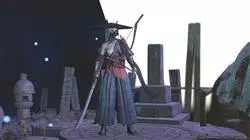University certificate
The world's largest faculty of video games”
Introduction to the Program
Level design is one of the most important tasks in the creation of a video game: specialize in this area and access the best companies in the sector”

Video games are made up of multiple elements that give them shape when playing. Their characters, genre, gameplay or their narrative structure are some of these aspects. But there is another very important one: the levels.
The levels of a video game are the total playable space in a given stage of the game. Therefore, the levels are often very different from each other so that the player experiences different challenges and enjoys a variety of aesthetics. Depending on the game in question, the levels can be longer or complex or can be very basic and in 2D.
However, whatever they’re like, it is not easy to design them appropriately. The levels must be attractive, varied, with the difficulty adapted to the context of the game and, most importantly, must be balanced. For this reason, experts specialized in this task are needed, and companies in the industry need people to take care of it.
Therefore, this Postgraduate certificate in Level Design for Video Games is the answer for all those who wish to work in large companies in the sector designing different levels for their most important video games, thanks to the knowledge and skills they will obtain throughout the course.
The video games you work on will be the most attractive in the entire industry”
This Postgraduate certificate in Level Design for Video Games contains the most complete and up-to-date program on the market. Its most notable features are:
- Practical cases presented by experts in Video Game Level Design
- The graphic, schematic, and practical contents with which they are created, provide scientific and practical information on the disciplines that are essential for professional practice
- Practical exercises where self-assessment can be used to improve learning
- Special emphasis on innovative methodologies
- Theoretical lessons, questions to the expert, debate forums on controversial topics, and individual reflection assignments
- Content that is accessible from any fixed or portable device with an Internet connection
This Postgraduate certificate is what you were looking for to learn to design levels for video games”
The teaching staff of this program includes professionals from the industry, who contribute the experience of their work to this program, in addition to recognized specialists from reference societies and prestigious universities.
The multimedia content, developed with the latest educational technology, will provide the professional with situated and contextual learning, i.e., a simulated environment that will provide immersive learning programmed to learn in real situations.
This program is designed around Problem-Based Learning, whereby the professional must try to solve the different professional practice situations that arise throughout the program. For this purpose, the student will be assisted by an innovative interactive video system created by renowned and experienced experts.
The industry is waiting for you: specialize and design great video games"

Specialization is key in the field of video games. Don't wait any longer"
Syllabus
This Postgraduate certificate in Level Design for Video Games has been created by great experts who work in the industry, and, for this reason, the contents are focused on professional performance. Therefore, throughout its 2 modules, divided into 10 topics each, students will be able to learn everything they need to become specialists in level design for many different types of video games, helping their careers to take off quickly.

The best contents are waiting for you in this Postgraduate certificate”
Module 1. 3D Modeling
1.1. Introduction to C#
1.1.1. What is OOP?
1.1.2. Visual Studio Environment
1.1.3. Types of Data
1.1.4. Type Conversions
1.1.5. Conditionals
1.1.6. Objects and Classes
1.1.7. Modularity and Encapsulation
1.1.8. Heritage
1.1.9. Abstract Classes
1.1.10. Polymorphism
1.2. Fundamentals of Mathematics
1.2.1. Mathematical Tools in Physics: Scalar and Vector Quantities
1.2.2. Mathematical Tools in Physics: Scalar Product
1.2.3. Mathematical Tools in Physics: Vector Product
1.2.4. Mathematics Tools in OOP
1.3. Physical Principles
1.3.1. Rigid Solids
1.3.2. Kinematics
1.3.3. Dynamics
1.3.4. Collisions
1.3.5. Projectiles
1.3.6. Flying
1.4. Fundamentals of Computer Graphics
1.4.1. Graphics Systems
1.4.2. 2D Graphics
1.4.3. 3D Graphics
1.4.4. Raster Systems
1.4.5. Geometric Modeling
1.4.6. Elimination of Hidden Parts
1.4.7. Realistic Visualization
1.4.8. OpenGL Graphics Library
1.5. Unity: Introduction and Installation
1.5.1. What Is Unity?
1.5.2. Why Unity?
1.5.3. Features of Unity
1.5.4. Installation
1.6. Unity: 2D and 3D
1.6.1. 2D Gameplay: Sprites and Tilemaps
1.6.2. 2D Gameplay: 2D Physics
1.6.3. Unity 2D Video Game Examples
1.6.4. Introduction to Unity 3D
1.7. Unity: Instantiation and Object Creation
1.7.1. Adding Components
1.7.2. Deleting Components
1.7.3. Importing Assets and Textures
1.7.4. Supplies and Maps for Materials
1.8. Unity: Interactions and Physics
1.8.1. Rigidbody
1.8.2. Colliders
1.8.3. Joints
1.8.4. Character Controllers
1.8.5. Continuous Collision Detection (CCD)
1.8.6. Physics Debug Visualization
1.9. Unity: Basic Artificial Intelligence (AI) for NPC
1.9.1. Pathfinding in Unity: Navmesh
1.9.2. AI Enemies
1.9.3. NPC Action Tree
1.9.4. NPC Hierarchy and Scripts
1.10. Unity: Animation Fundamentals and Implementation
1.10.1. Animation Controller: Character Association
1.10.2. Blend Tree: Combination Tree
1.10.3. State Transitions
1.10.4. Transition Threshold Modification
Module 2. Video Game Engines
2.1. Video Games and Information Communication Technologies (ICTs)
2.1.1. Introduction
2.1.2. Opportunities
2.1.3. Challenges
2.1.4. Conclusions
2.2. History of Video Game Engines
2.2.1. Introduction
2.2.2. Atari
2.2.3. The 80s
2.2.4. First Engines. The 90s
2.2.5. Current Engines
2.3. Video Game Engines
2.3.1. Types of Engines
2.3.2. Video Game Engine Parts
2.3.3. Current Engines
2.3.4. Selecting an Engine for Our Project
2.4. Motor Game Maker
2.4.1. Introduction
2.4.2. Scenarios Design
2.4.3. Sprites and Animations
2.4.4. Collisions
2.4.5. Scripting in Game Maker Languages (GML)
2.5. Unreal Engine 4: Introduction
2.5.1. What Is Unreal Engine 4? What Is Its Philosophy?
2.5.3. Materials
2.5.4. UI
2.5.5. Animations
2.5.6. Particle Systems
2.5.7. Artificial Intelligence
2.5.8. Frames Per Second (FPS)
2.6. Unreal Engine 4: Visual Scripting
2.6.1. Blueprints and Visual Scripting Philosophy
2.6.2. Debugging
2.6.3. Types of Variables
2.6.4. Basic Flow Control
2.7. Unity 5 Engine
2.7.1. C# y Visual Studio Programming
2.7.2. Creating Prefabs
2.7.3. Using Gizmos to Control Video Games
2.7.4. Adaptive Engine: 2D and 3D
2.8. Godot Engine
2.8.1. Godot Design Philosophy
2.8.2. Object- and Composition-Oriented Design
2.8.3. All in One Package
2.8.4. Open and Community-Driven Software
2.9. RPG Maker Engine
2.9.1. RPG Maker Philosophy
2.9.2. Taking as a Reference
2.9.3. Creating a Game with Personality
2.9.4. Commercially Successful Games
2.10. Source 2 Engine
2.10.1. Source 2 Philosophy
2.10.2. Source and Source 2: Evolution
2.10.3. Use of the Community: Audiovisual Content and Video Games
2.10.4. Future of Source 2 Engine
2.10.5. Successful Mods and Games

Make the most of the opportunity and take the step to get up to date on the latest developments in Level Design for Video Games "
Postgraduate Certificate in Level Design for Video Games
.
Dive into the exciting world of video game level design with TECH Global University's Postgraduate Certificate in Video Game Level Design. Our program gives you the opportunity to acquire the skills and knowledge necessary to create captivating and memorable game experiences. In our university we understand the importance of adapting to the current needs and demands, so we offer this course in online classes format. Study from the comfort of your home, without time restrictions, and access our quality content through an interactive and friendly platform. By choosing our postgraduate course in Level Design for Videogames, you will benefit from a series of advantages. The online classes allow you to advance at your own pace, dedicating the necessary time to each topic and practicing with practical exercises. In addition, you will have the support of professional experts in the video game industry, who will provide you with personalized advice and constant feedback. In this program, we focus on teaching you the most advanced and effective techniques used in the creation of video game levels. You will learn how to design interactive environments, considering aspects such as game balance, player progression, narrative and visual aesthetics.
Design the most challenging levels for veteran gamers
.
Our curriculum covers everything from the fundamentals of level design to cutting-edge methodologies. You'll explore concepts such as level structure, strategic placement of objects and obstacles, puzzle and challenge design, and performance optimization. You will also learn how to use the most popular and relevant game development tools on the market. With the advanced program you will be prepared to face the challenges of the digital entertainment industry. You will develop creative and technical skills that will allow you to contribute to the development of successful and attractive video games for players. Don't miss this opportunity to become an expert in video game level design. Enroll now and start creating virtual worlds full of emotions and fun.""







